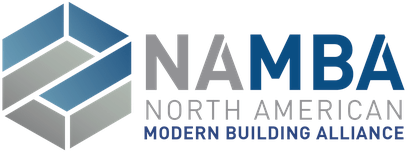Fire Performance Requirements
 Building codes set prescriptive performance requirements for construction and materials. To support performance reliability, the requirements are satisfied through use of specific product and testing standards referenced in the codes. These referenced standards are developed by various standards development organizations (SDOs) including ASTM International (ASTM), the National Fire Protection Association (NFPA), FM Approvals (FM), Underwriters Laboratories (UL) and Underwriters Laboratories of Canada (ULC).
Building codes set prescriptive performance requirements for construction and materials. To support performance reliability, the requirements are satisfied through use of specific product and testing standards referenced in the codes. These referenced standards are developed by various standards development organizations (SDOs) including ASTM International (ASTM), the National Fire Protection Association (NFPA), FM Approvals (FM), Underwriters Laboratories (UL) and Underwriters Laboratories of Canada (ULC).
Material and product standards set minimum requirements for various properties or characteristics, such as surface burning characteristics, thermal resistance, dimensional stability, and density. Test standards establish appropriate specimens, procedures and methodologies used to evaluate properties or characteristics of materials, products, and assemblies in a consistent and repeatable way. A list of fire test standards referenced by the building codes in context of building envelope requirements includes:
- UL – UL 263, UL 723, UL 790, UL 1256
- ASTM – E84, E108, E119, E136, E814, E1354, E1966, E2307
- NFPA – NFPA 259, NFPA 268, NFPA 275, NFPA 285, NFPA 286
- FM Approvals – FM 4450, FM 4470, FM 4880
For example, the International Building Code® (IBC) includes requirements that limit surface burning characteristics for many building materials and their uses when tested in accordance with ASTM E84.
Building codes have specific requirements for the use of foam plastic insulation and other combustible building materials and types of assemblies. For example, the IBC contains provisions that allow the omission of the prescribed thermal barrier separation of foam plastic insulation from the interior of the building upon successful performance in certain full-scale tests. Other examples include fire test requirements for fire-resistant assemblies (ASTM E119, UL 263) and flame propagation of exterior wall assemblies containing combustible components (NFPA 285).
It is important to remind users that fire test standards evaluate and compare the response of materials, products, and assemblies to heat and flame under controlled conditions. By themselves, fire testing and test results do not incorporate all factors required for fire-hazard or fire-risk assessment of the materials, products, or assemblies under actual fire conditions.
Common Standard Testing Methods
ASTM E84, Standard Test Method for Surface Burning Characteristics of Building Materials, is used to assess the surface burning characteristics of building materials and products. Often referred to as the “Tunnel Test,” E84 evaluates a test specimen measuring 22 inches wide by 24 feet long mounted horizontally in the ceiling of the test chamber. The test specimen is exposed to a gas flame at one end of the test chamber for a period of 10 minutes, during which the progression of flame front along the test specimen is measured. The result is then compared against that of a calibration material to calculate a flame spread index. Smoke produced during the test is also measured and compared against the calibration material to calculate a smoke developed index. See ASTM E84 for further details.
Product manufacturers use flame retardants as one of many tools to support compliance with fire performance requirements of the building code. The term “flame retardant” most accurately describes a function or performance attribute, not a family of chemicals. A variety of different chemistries, with different properties and molecular structures, produce a flame retarding effect when used in certain products or applications. In some applications, it is possible to combine more than one additive flame retardant to maximize effectiveness.
ASTM E119, Standard Test Method for Fire Tests of Building Construction and Materials, is a test used to determine the fire-resistance rating of construction assemblies. For example, a wall assembly rating is determined by constructing a 10-foot by 10-foot test specimen of total wall system, including: framing, insulation, sheathing, siding and gypsum board. The test specimen is installed vertically on the test furnace, then one side is exposed to flame and heat for the desired rating duration (i.e., one, two, three or four hours) and immediately followed by a hose stream test. Failure points during time of fire exposure include flame penetration through the wall section, temperature rise on the unexposed side of the assembly beyond prescribed limits and structural failure or collapse of the assembly.
Floor/ceiling and roof assemblies may also be tested in accordance with ASTM E119; however, these assemblies are tested in a horizontal position. See ASTM E119 for further details.

